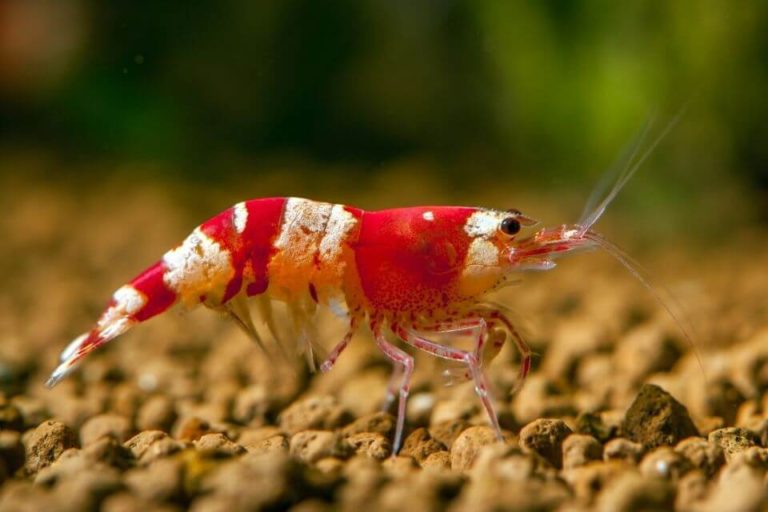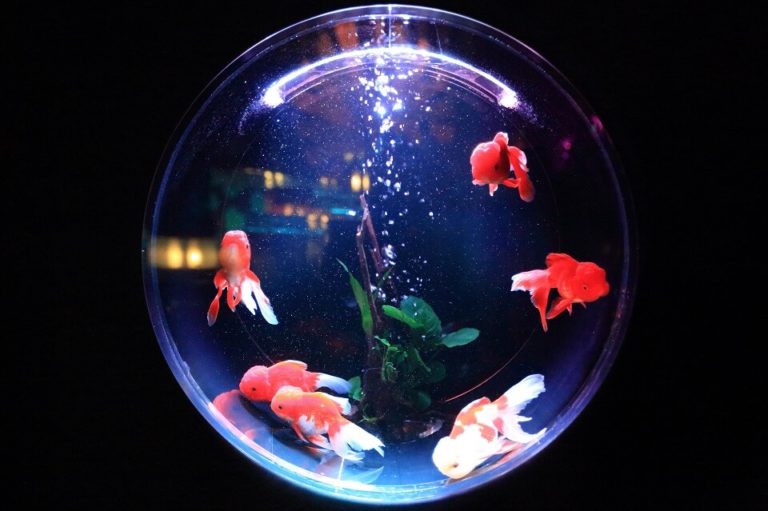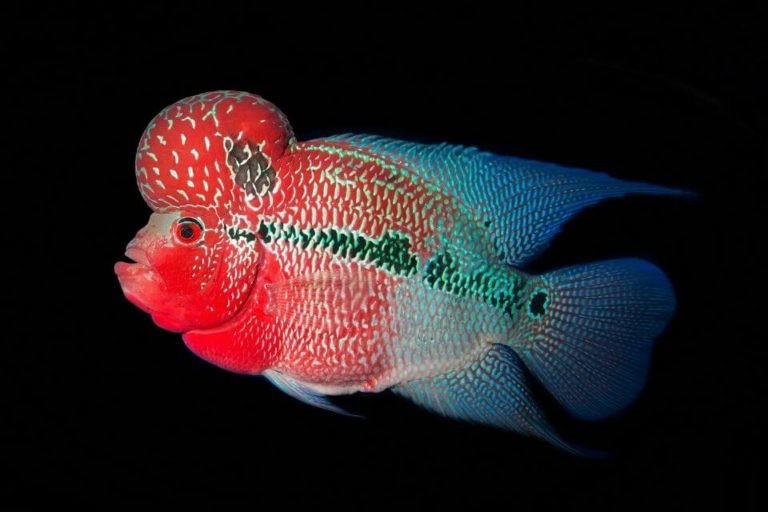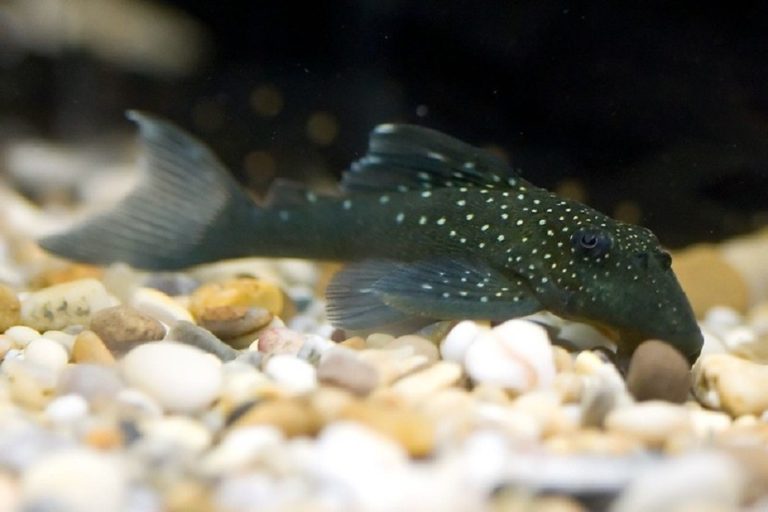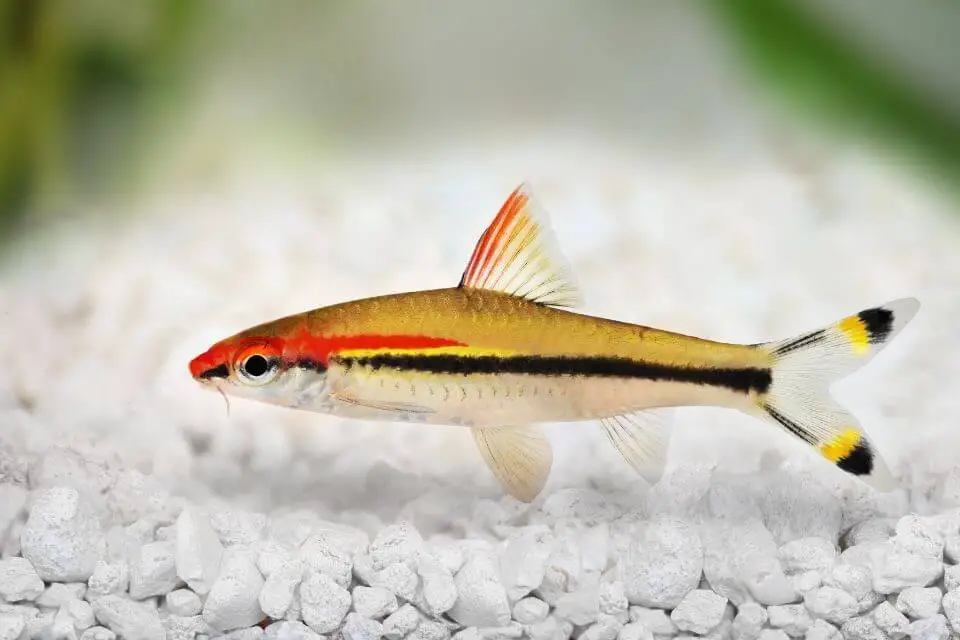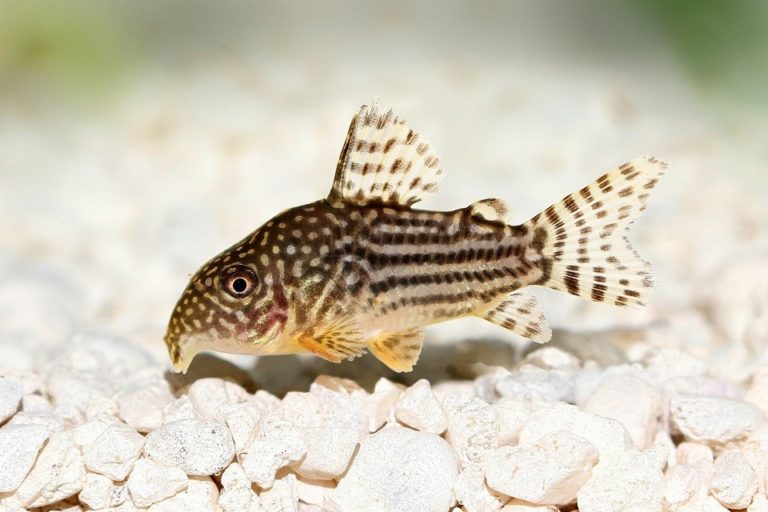Oranda Goldfish Care: Diet, Tank Mates, Tank Setup and Breeding Profile
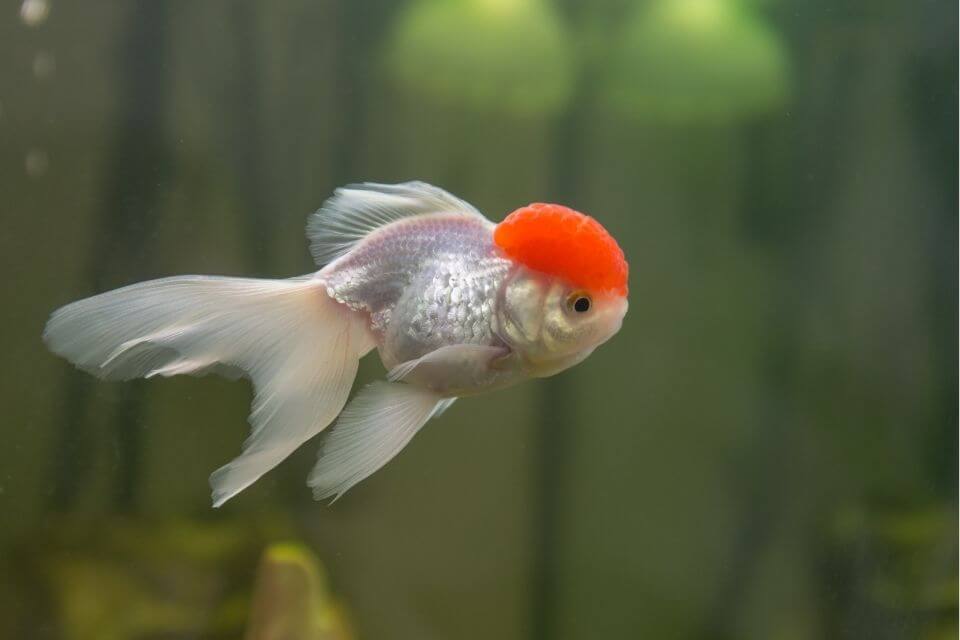
Oranda Goldfish is a stunning fish with unique and majestic beauty. These creatures fascinate aquarists in many aspects and you can be sure you’ll be impressed by learning what it offers.
Common in China and Taiwan, this Goldfish breed is regarded as a sign of luck, wealth, and power.
The Oranda Goldfish is a hardy fish and a common addition in many aquariums. There are so many varieties of this fish species, but all add brightness and vibrancy in aquariums.
These fish species have fleshy outgrowths on their heads known as wens. With this feature and their pronounced body colors, it’s hard to miss identifying them in a community aquarium.
Before you visit your local pet store to source this fish, there’re some care details you need to know. We’ve compiled this guide to help you understand this species better and make keeping it easy and straightforward for you.
| Quick Facts: | |
|---|---|
| Common Names : | Oranda Goldfish |
| Origin : | China |
| Family : | Cyprinidae |
| Scientific Name : | Carassius auratus auratus |
| Care Level : | Intermediate |
| Temperament : | Peaceful |
| Social : | Community fish |
| Diet : | Omnivores |
| Size (average) : | 7 to 9 inches |
| Lifespan : | 10 - 15 years |
| Breeding : | Egg layer |
| Minimum Tank Size: | 30 gallons |
| Tank Environment : | Freshwater Sandy substrate or pebbles, Driftwood, Silk or plastic plants |
| Temperature : | 68 – 72 °F (20 – 22 °C) |
| Water Hardness : | 4 - 20 dGH |
| Water pH Level : | 5 - 8 |
Overview of Oranda Goldfish
Scientific name: Carassius auratus auratus
The Oranda is a beautiful, medium-sized freshwater fish of the Cyprinidae family. Its natural origin is not clearly known, but aquarists believe it’s a descendant of the Silver Prussian Carp that hails in Siberia.
This fish comes in pretty many colors, including orange, yellow, white, gold, red and black, all that seamlessly brightens up any fish tank. The fish also has a contrasting fleshy growth on the head, a very distinctive and rare appearance feature to find in common aquarium fish.
The Oranda Goldfish is a calm and non-aggressive fish known to live peacefully with a plethora of other laid-back fish. Although they are not schooling fish, they like spending time swimming with their own companion.
The fish is omnivorous and can eat whatever you give it. For this reason, it’s recommended to restrict its meals to healthy and nutritious ones. A typical Oranda Goldfish will grow up to 7 to 9 inches and live for up to 10 to 15 years.
However, these two characteristics depend on the kind of diet and care level given to the fish.
Oranda Goldfish are hardy but will still contract bacterial, fungal, and parasitic infections if kept in poor water conditions. Breeding this fish is not complicated and can happen in normal tank conditions and even in your home aquarium.
Oranda Goldfish Size
Although most of the Orandas sold in pet shops are around 1 inch, they grow pretty big when kept in suitable conditions. The average length of a mature Oranda Goldfish is 7 to 9 inches.
Their body is perfectly in the middle of being broad and slender and they nearly take the shape of an egg.
The first biggest Oranda Goldfish to be ever documented was from Hong Kong and it measured a massive 15 inches. If you keep your Oranda Goldfish in ideal conditions, it can get big to be about the size of your mature cat.
– How Long Does It Take Oranda Goldfish To Grow?
Oranda Goldfish grow quickly and if all care conditions are maintained, they’ll be fully grown in 6 to10 months. Please note that all your Oranda Goldfish will not reach maturity at the same time as there’re growth rate variations due to adaptations and feeding habits of each individual fish.
Oranda Goldfish Lifespan
Oranda Goldfish don’t disappoint even when it comes to lifespan. The average is 10 to 15 years and can live even past this age mark when you’re more focused on their health and happiness.
Whether your Oranda Goldfish will reach their maximum age or not is a question of the care level you provide them.
Oranda Goldfish Appearance and Colors
Oranda Goldfish are medium-sized fish with not too slender, not too widebodies. Their bodies perfectly resemble an egg’s shape.
As mentioned above, the fish comes in various colors, including gold, white, yellow, orange, blue, and black. They also have this metallic sheen that reflects light in a perfectly- lit aquarium.
One of the most distinctive appearance features of this fish is the hood or overgrowth on their head. Many people confuse this with a brain outgrowth, but it’s just normal fleshy growth. The bump comes in a variety of colors, just as is the case with the fish’s primary color.
For many Oranda’s, the fleshy bump sprout after around four months of age and are fully grown when the fish clocks two years. Some Oranda Goldfish may take more time than others for their fleshy bumps to develop fully.
Despite the fleshy growth being a unique appearance feature for this fish, it may overgrow to the point that it affects the fish’s vision. Luckily, the growth can be trimmed as it’s nerve-less.
It’s not all about the head hood for this fish; their tail fin is also quite unique. It’s either broad or fan-like and gracefully completes the look of this beautiful fish. This fish’s tail fin is not what you’re used to seeing in other fish in your tank.
Oranda Goldfish Typical Behavior
Like any other Goldfish breed, the Oranda Goldfish is a peaceful, non-aggressive, and good-mannered fish. The fish is not known to be troublesome and will get along with any calm fish.
To ensure that your Orandas maintain their impressive behavior, keep them in non-stressful environments, maintaining all their optimum tank conditions.
Although not a schooling fish, Oranda Goldfish feel safer when they are kept with their own companion. They’re highly sociable and are graceful attention seekers.
If an Oranda is used to seeing you, she’ll recognize you through the glass and swim towards your direction to seek your attention.
Oranda Goldfish are bottom dwellers that spend most of their time swimming and floating. Having several Orandas in the same tank creates beautiful and charming scenery, especially when they are up for a slow swimming show.
Orandas are scavenging fish, so if they’re not swimming, you’ll find them collecting food leftovers and moving items in the tank from one point to another. When their energy is at its peak, they’ll make adorable gulping sounds.

Oranda Goldfish Care and Habitat
From a tank conditions’ perspective, Oranda Goldfish are very demanding. First, they are sensitive to abrupt tank condition changes and will not hold up well if you’re used to changing the conditions every now and then.
Bacterial infection is another detrimental factor for these fish and therefore, it is crucial to maintain every tank condition we’ll discuss below. The tank needs to be washed regularly and any debris/ floating objects removed.
– Tank Size
The minimum tank size recommended for a single Oranda Goldfish is 20 gallons. You should allow an extra 10 gallons for any fish you include in the tank. This means you can have 2 Oranda Goldfish in a minimum of 30 gallons tank.
The fish is large when fully grown, so the more extensive the tank, the better. A large tank will provide enough water to dilute the high amount of waste that this fish produces. Rectangular tanks are preferable as they provide extensive space for the exchange of gases, thus improving the fish’s health.
– Tank Setup
Oranda Goldfish like to dig in the substrate, so you should avoid materials like gravel that could hurt them. Go for soft substrates like fine-grained sand or pebbles.
When it comes to lighting, switch between periods of sufficient light and darkness. The fish will do well with 12 to 13 hours of moderate light daily. In fact, some Oranda Goldfish will live perfectly in a tank that receives enough natural light during the day.
You can add decorations such as pieces of driftwood and rocks to add some private spots in the tank where the fish can chill out. Just ensure that these decorating elements don’t have sharp edges that could injure the fish.
Remember this is not your typical sized aquarium fish and you’ll have to be very strategic when adding decorations to the tank. Cramping the decorations in the tank may significantly reduce free swimming space, thus affecting the wellbeing of this fish.
– Suitable Plants
Oranda Goldfish do well with smaller and sturdier plants that will withstand the fish’s swimming activities. The fish can get pretty big, so pick plants with limited growth.
If you’re having a hard time selecting live plants, you can go for silk or artificial plastic plants. They will provide shelter for the fish, buffer the water currents, and most importantly, hold up well with the fish’s activity.

– Water Conditions and Parameters
Keeping the water clean, oxygenated and slow-flowing will keep the fish happy and healthy at all times. In addition, maintain the following water parameters when keeping Oranda Goldfish:
- Temperature: 68 – 72 °F (20 – 22 °C)
- Water pH: 5 – 8
- Water hardness: 4 – 20 dGH
Invest in a highly effective water filtration system to keep the water sufficiently oxygenated and clean. For this fish, partial water changes (30%) should be done twice a week.
Diet and Feeding For Oranda Goldfish
Oranda Goldfish are omnivorous and will eat absolutely anything you give them. Perhaps this is the reason they grow to a larger size than many tank fish and at a faster rate.
Anything that fits in their mouth is a snack for them, so it’s crucial to keep the tank clean.
– What Is The Best Food For Oranda Goldfish?
Generally, Oranda Goldfish enjoy dry and live foods and will spend most of their time eating. They’ll snack on dry pellets, worms, larvae, brine shrimp, soft plant material, algae, and insects.
– How Often Should You Feed Oranda Goldfish?
To control their weight, it’s good to monitor what is enough for your fish and feed that amount once per day for adult Oranda Goldfish. For these fish, it’s recommended that you feed them 3% of their body size.
You can skip meals if you see them swimming on their side as this is a sign that they are overfed and are completely full. On the other hand, if you see them digging into the substrate searching for food, increase the amount the next time you feed them.
Origin, Distribution, and Availability
Generally speaking, the exact origin of the Aquarium kept a variety of the Oranda Goldfish is not clearly established, but seasoned aquarists believe that it’s a product of crossbreeding.
It’s mostly thought to be a descendant of the Silver Prussian Carp, an omnivorous fish from Siberia. For this reason, it’s hard to find Oranda Goldfish in the wild unless it’s a surviving release from capture.
Extensive breeding has led to an increase of this fish species in the aquarium market, with China and Taiwan leading the countries where these fish is widely populated. Orandas are the most common goldfish species and can be found in absolutely any pet store.
The average price of a one-inch Oranda Goldfish in local pet stores is $7.00. The cost of larger Orandas (around 4 inches) will stretch from about $35 to $40. If you want to enjoy price discounts, buy more Orandas in one batch.
Oranda Goldfish Common Diseases
The Oranda Goldfish is amazingly hardy and despite the potential wen injuries/ infections, the fish has no serious or specific illnesses.
If water conditions are poor, the fish may contract Ich, a parasitic skin disease that causes white spots on the fish’s body. Luckily, this condition can be cured with medications that you can source from your local pet store.
Swim bladder disease also affects this fancy goldfish and is believed to be a result of a poor diet. The most common sign is reduced swimming and activeness. To treat an affected fish, withdraw food for a day or two, then feed it with frozen meaty foods for several days.
Fungal and bacterial infections may also affect this fish if these organisms are present in the fish’s tank. You’ll prevent the occurrence of all these diseases if you maintain water conditions and quality of feeds to the required standards.
Gender: How Can You Tell If A Oranda Goldfish Is Male Or Female?
Luckily for these fish, there’re a good number of gender differences that you can monitor to sex them. The most prominent ones include:
Size: Males are generally smaller than females. Females have a rounder body when carrying eggs.
The shape of the vent: The opening under the tail fin (vent) is rounder and broader in females than in males.
Pectoral fins: Males have thicker pectoral fins compared to females.
Small white bumps on the head and gills: These are only present in males during breeding.
Behavior during breeding: The male Oranda Goldfish will always be seen nudging the vent of the females and doing the chasing technique to lure her into mating.
Oranda Goldfish Breeding
Although Oranda Goldfish are not so pricey, it would help if you bred your own stock at home.
These fish reach sexual maturity at two years and you only need to put one female with several males to initiate breeding. All the normal tank conditions should be maintained, but the temperature raised slightly for the breeding to occur.
Once breeding is successful, the female lays very many eggs that hatch into lots of fry in a matter of days. It only takes 2 to 3 days for the fry to be free swimming and feed independently.
What Fish Can Live With Oranda Goldfish? (Tank Mates)
Oranda Goldfish enjoy their own company but will live harmoniously with friendly and calm fish.
Fish that are bigger than the average size of your Orandas are definitely incompatible since they can turn out to be troublesome. Similarly, smaller and more active fish can nip at the fins of your Oranda Goldfish; therefore, they should also be avoided.
Oranda Goldfish can be messy, so scavenging fish that can clean up the tank is excellent tankmates. The other perfect tankmates for this fish are:
- Lionhead Goldfish
- Ranchu Goldfish
- Pepper Cory Catfish
- Black Moors
- Sailfin Pleco
- Ryukin Goldfish

Frequently Asked Questions
– Are Oranda Goldfish Hardy?
The fish itself is hardy and will stay healthy as long as the water conditions are top-notch. If conditions are poor, the fish is susceptible to bacterial, fungal, and parasitic diseases.
The head hood is also prone to injuries and infections; hence, keeping the tank clean and debris-free is paramount.
– Do Oranda Goldfish Need A Heater?
If the room temperature in your area is too low (especially during winter), it is recommended that you include a heater in this fish tank. The fish’s heart works harder when the temperatures are below room temperature affecting the fish’ health and wellbeing.
A heater helps regulate the fish’s body temperature and this keeps the fish nourished and healthy.
– Can Oranda Goldfish Live In A 10 Gallon Tank?
The tank size requirement of one mature Oranda is 10 gallons. It’s therefore impractical to keep a mature Oranda Goldfish in a 10 gallons tank since it would mean that you keep only one individual.
Keeping one goldfish in a tank can be very stressful and health deteriorating. You can, however, keep several young Orandas in such a tank.
– How Many Oranda Goldfish Can You Have In A 55 Gallon Tank?
Considering the 10 gallons per individual tank size recommendation, a 55 gallons tank would be great for 5 Oranda Goldfish. If you have an extra medium-sized Oranda Goldfish, it can still be accommodated in the tank.
– Do Oranda Goldfish Get Lonely?
Although it’s hard to determine if an Oranda Goldfish is lonely or not, it can definitely get lonely when kept in solitary. Orandas are social fish and will live happily in a tank where they interact with others.
In this regard, buy at least a pair when sourcing these fish to reduce their capacity of getting lonely.
– Are Oranda Goldfish Smart?
Oranda Goldfish are no doubt smart fish. They can easily recognize if you’re used to interacting with them and they will swim at the edge of the tank when they see you.
Seasoned aquarists report that it’s also easy to teach this fish to follow your fingers along the glass walls. Oranda Goldfish communicate by gulping heavily anytime they are excited or want to seek your attention.
– Can Oranda Goldfish Live With Koi Fish?
Koi and goldfish are pretty similar, especially when it comes to behavior, meaning that they can be kept in a tank together. However, they must be of almost identical size as they can snack on each other when the size difference is huge.
These fish are primarily known to eat each other’s eggs and fry. This is not a bad thing in tank conditions, though, as it helps control the fish’s population, which can get really big if breeding is not controlled.
– How Do You Make Oranda Goldfish Grow Faster?
Just like any other fish, the Oranda Goldfish will grow faster if kept in non-stressful environments and given proper foods. For water conditions, ensure that the filtration system works all the time and provides sufficient aeration in the water.
Keeping the tank clean and clutter-free also favors the growth of this fish. For food, go for high-quality fish pellets as their main meal and include meaty and vegetable treats once in a while.
– How Do You Pick A Oranda Goldfish?
For this fish, visual appearance is the most crucial factor to look out for. Go for individuals with bright and vivid colors, perfect egg-like body shapes, and those that are perfectly sized for their age.
The head growth type and color form are a matter of preference, but the brightly hooded ones look more stunning in an aquarium under lights.
Final Thoughts
The Oranda Goldfish fish is a stunning fish that you only need to maintain specific tank conditions to keep it healthy and stress-free. Keeping your tank clean and debris-free will eliminate microorganisms and reduce diseases for the fish.
One maintenance feature you’ll do for this fish species and probably not for many tank fish is trimming the fleshy growth on the head. You can even reach out to a fish specialist to handle this maintenance practice error-free and effectively.
If well taken care of, these Goldfish are a great companion that you can even train to follow various commands like following your movements.
They’ll get along with any compatible fish in a community tank and you’ll never have to worry that they’ll cause any destruction. It’s definitely the fish anyone would want living in their aquarium.
From appearance to size, behavior to lifespan, this is a whole packaged fish that’ll impress in every aspect. We highly recommended that you keep this fish in your aquarium to get to experience what it offers.


